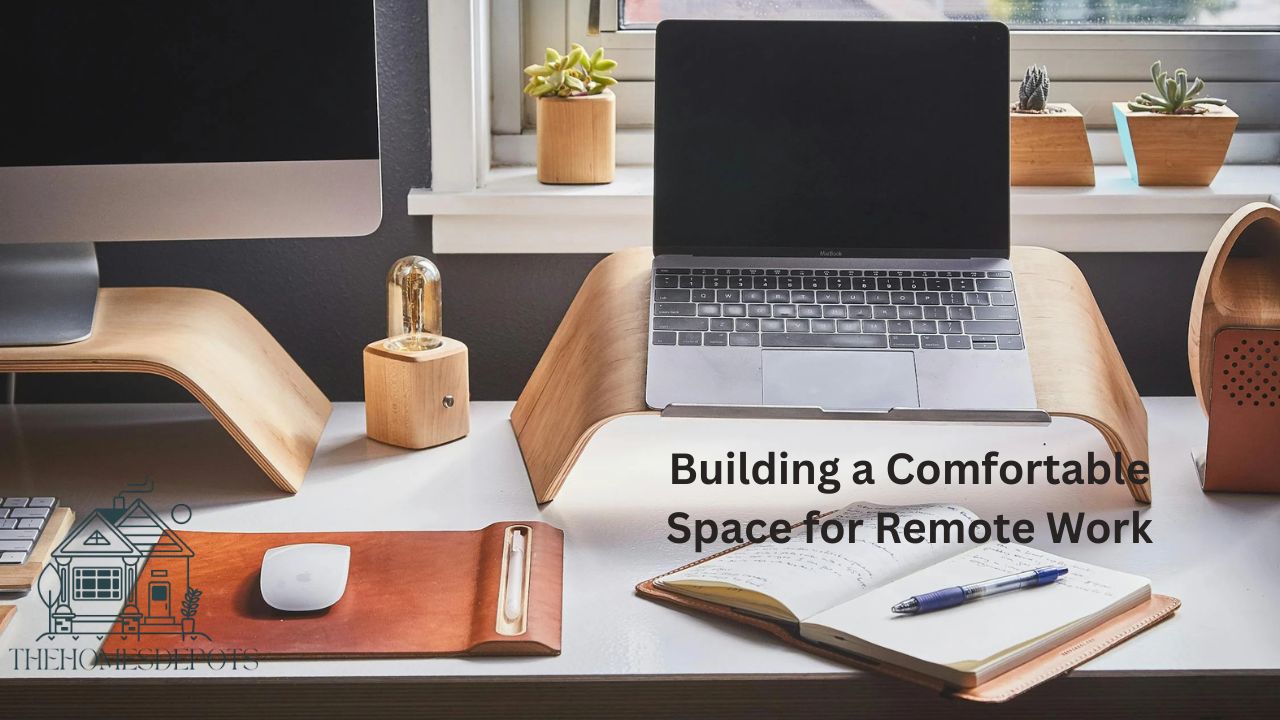The move to remote work has reshaped the way many of us approach our professional lives. The need to create a space at home that fosters productivity and satisfaction is undeniable. A well-thought-out workspace can do wonders for one’s mental well-being and work output. The importance of how we equip our home offices should not be underestimated. With a few targeted changes, anyone can transform a mundane corner into a hub of creativity and productivity.
Choose the Right Location
The foundation of a successful home office is choosing the right location. Selecting a quiet and comfortable setting significantly reduces distractions, ultimately improving focus. Consider the natural light in the area. Proximity to a window can brighten the mood and energize the mind. If space allows, a separate room dedicated to work can guard against the interruptions of household life.
Finding the most suitable spot doesn’t always require big moves. Sometimes, simply rearranging existing furniture can breathe new life into a familiar space. Rotating your desk towards the door rather than a wall not only opens up the view but also symbolizes openness to new ideas. Even small touches like a dedicated corner lamp or a room divider can make the area more defined and work-centric.
Embrace Technology
While avoiding common commercialization traps, it’s undeniable that the right electronics shape our workflow. A dependable high-speed internet connection is fundamental. Invest in a monitor that reduces eye strain if the job requires continuous screen time. Programming monitor settings to “night mode” or using blue light filtering glasses can stave off fatigue. Noise-canceling headphones might also become indispensable in maintaining focus.
Temperature control also plays a vital role in building a comfortable work environment. If you find fluctuations tugging at your focus, it might be the right time to seek help with my AC unit to ensure consistent climate control. A well-regulated temperature can prevent discomfort and keep you tuned into your tasks.
Committing to regular tech maintenance is just as important as acquiring the latest devices. Periodic software updates ensure security and boost performance, preventing unexpected disruptions in productivity. Exploring efficiency-focused apps and setting up a reliable backup process also safeguards work integrity. These proactive measures contribute to a stress-free and cohesive tech environment.
Ergonomics Matter
Long working hours without proper ergonomic furniture can take a toll on one’s body. A sturdy desk and an adjustable chair are imperative. The chair should support the curve of the spine and provide a comfortable seating position. The desk height should allow your wrists to be straight when typing. An ergonomic keyboard and mouse can also prevent strain. Investing in a standing desk or balance ball chair can keep your body engaged and reduce the risk of posture-related issues.
Paying attention to the concept of motion throughout the day can be beneficial. Designed ergonomics should complement natural body rhythms, encouraging changes in posture and promoting subtle activity. Incorporating prompts to stand, stretch, or take a short walk every hour can enrich both physical wellness and drive creativity. Ultimately, it’s about balancing comfort with functionality to ensure that the workspace supports the individual.
Declutter and Organize
An organized space is a productive space. Start by decluttering; the removal of unnecessary items can open up your area and your mind. A clean desk often translates to organized thoughts. Implement storage solutions like bookshelves, filing cabinets, or stylish storage boxes. Keep essentials within reach and create a filing system that fits your needs. A regular cleaning schedule helps maintain order and keeps distractions at bay.
Moreover, incorporating effective lighting has been known to influence productivity levels. Utilize natural light to its fullest during the day and opt for soft, ambient lighting in the evenings. Such subtle modifications can further ensure that the workspace remains inviting long after the sun has set. Additionally, placing organizational trays or pegboards on the walls might serve as functional decor and keep clutter off surfaces.
Set Work-Life Boundaries
Remote work blurs the line between professional and personal life. Setting boundaries is key to preserving work-life balance. Have a structured schedule and adhere to it. Define “work hours” and ensure clarity with household members about your availability during those times. Creating a habit of “commuting” from work mode to personal time — whether it’s a walk or reading a book — fosters balance and prevents burnout.
Personalize Your Space
Your workspace is a personal bubble. Adding personal touches can boost morale. Photographs, plants, or art pieces can command inspiration and motivation. Consider the effects of colors. Calming hues like blues or greens can create a serene environment, while energetic shades like yellow might boost creativity. The goal is to make your office a place you look forward to being in.
Sometimes, small seasonal changes to your decor can refresh the workspace’s energy. Rotating artworks, swapping pillows, or changing plant pots can introduce variation and stimulate creativity. The addition of personalized playlists or a small indoor fountain can enhance the atmosphere, making it a retreat that enriches work life, offering a sense of continuity and comfort amid the day’s tasks.
Conclusion
Creating a comfortable space for remote work isn’t merely about aesthetics or utility; it’s about cultivating a nurturing environment that supports both productivity and well-being. As many have made the leap to long-term remote work, these changes offer a practical means to thrive at work and at home.
